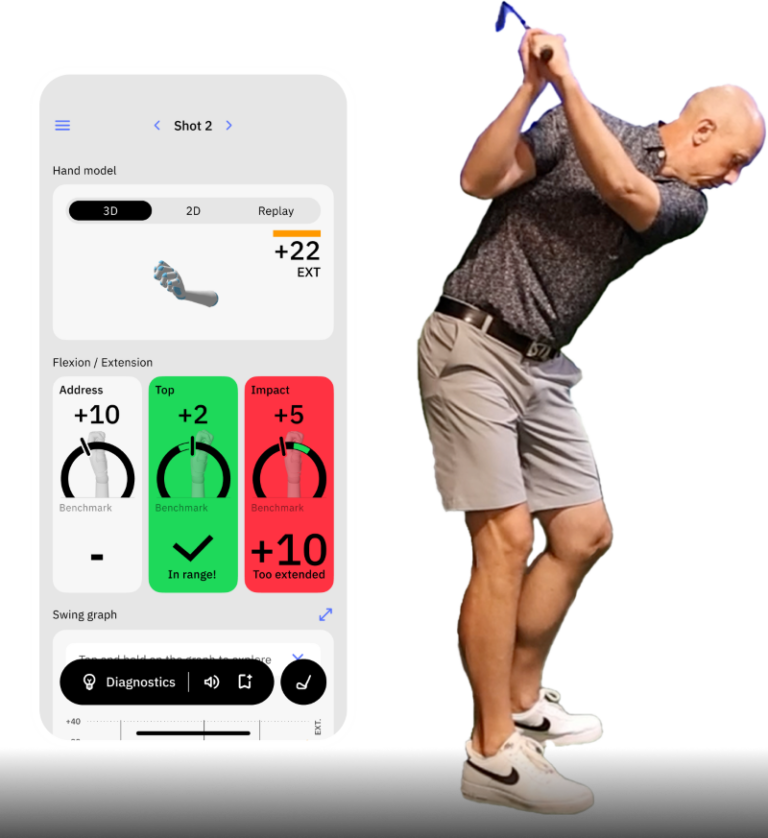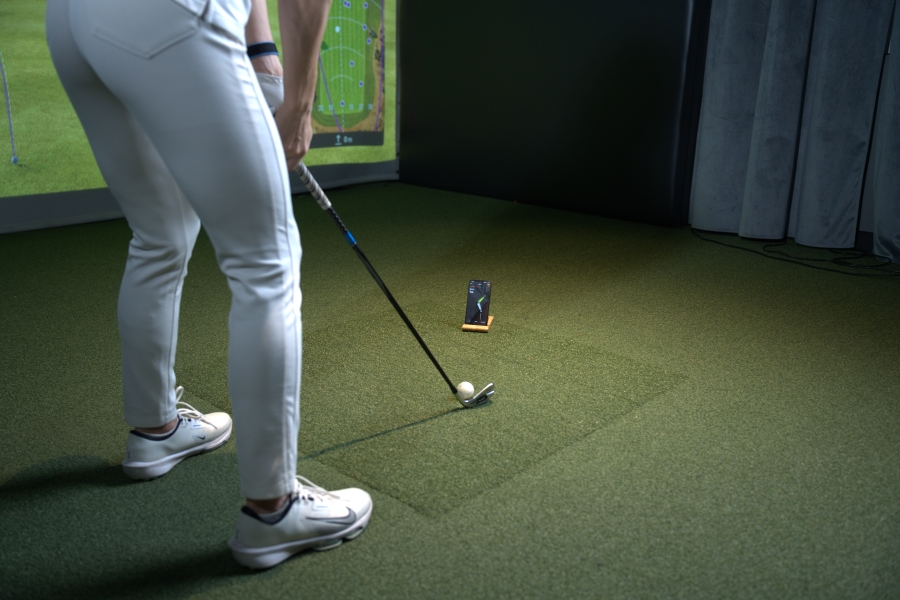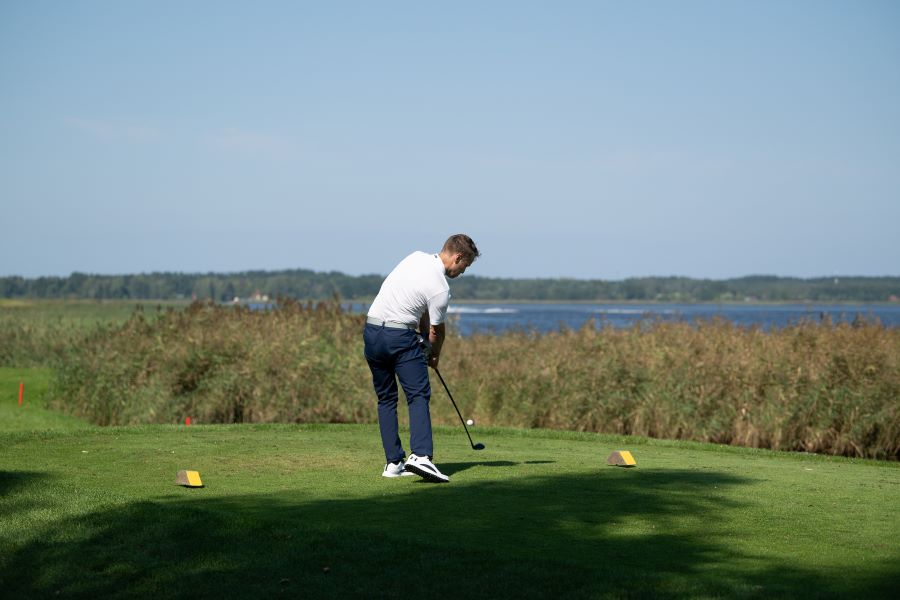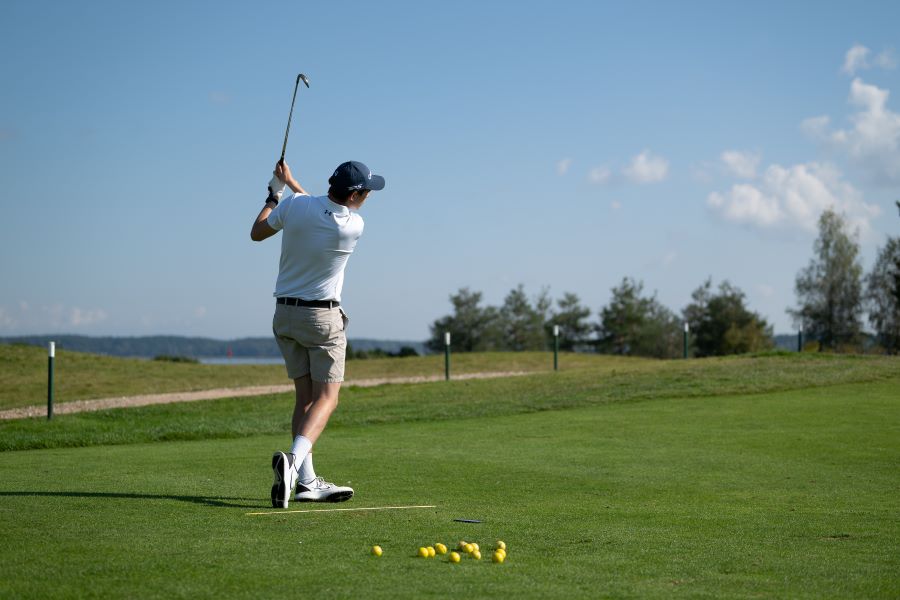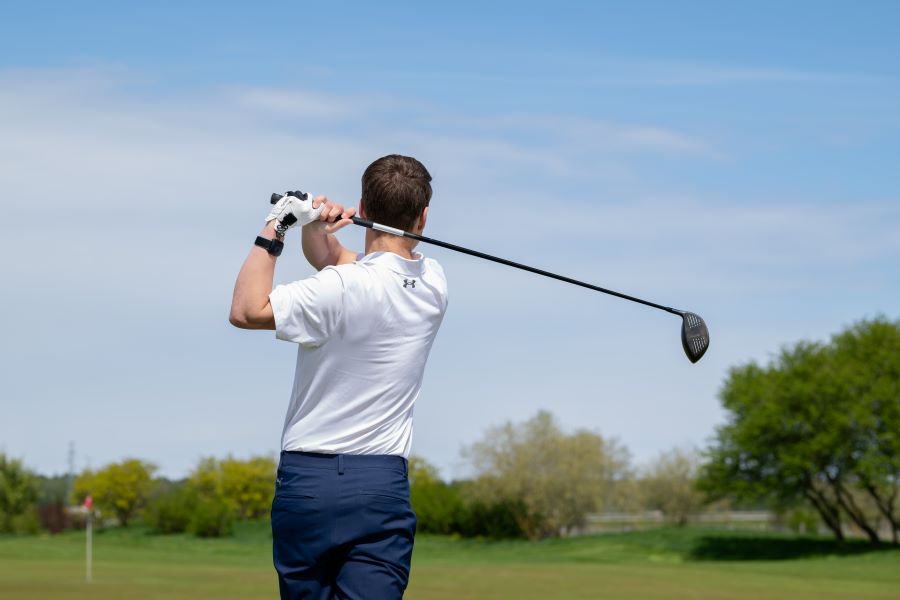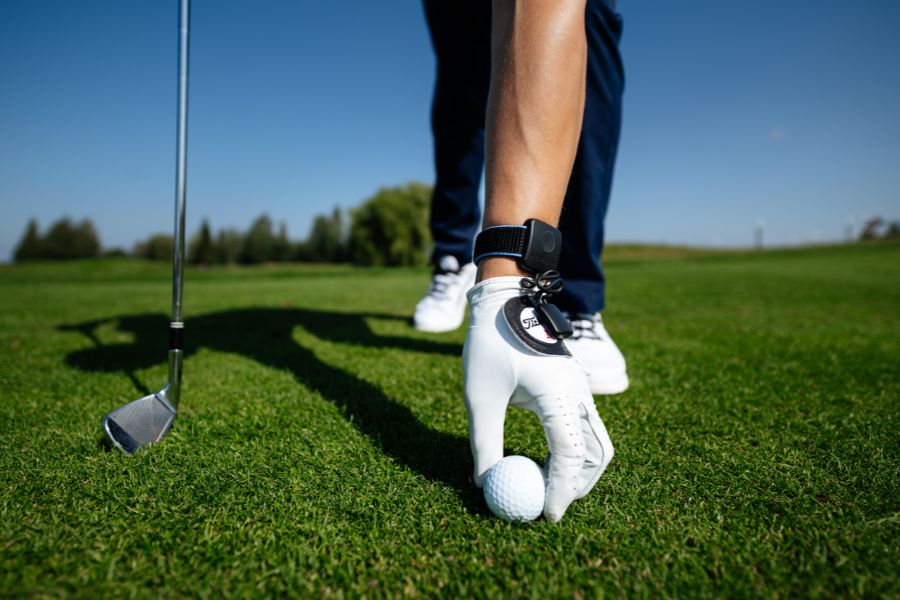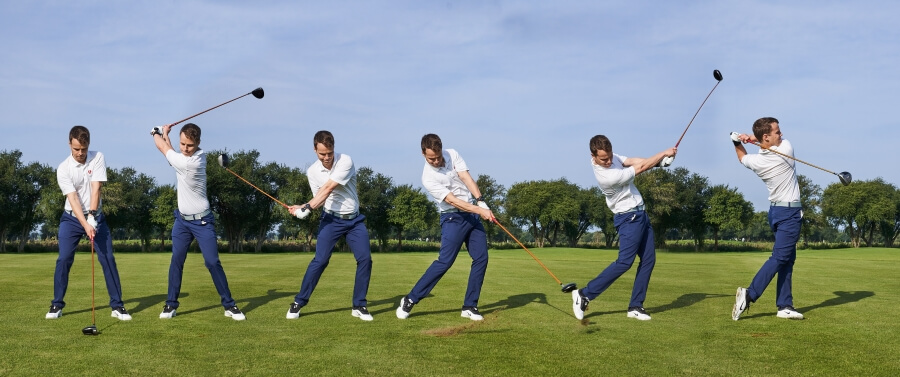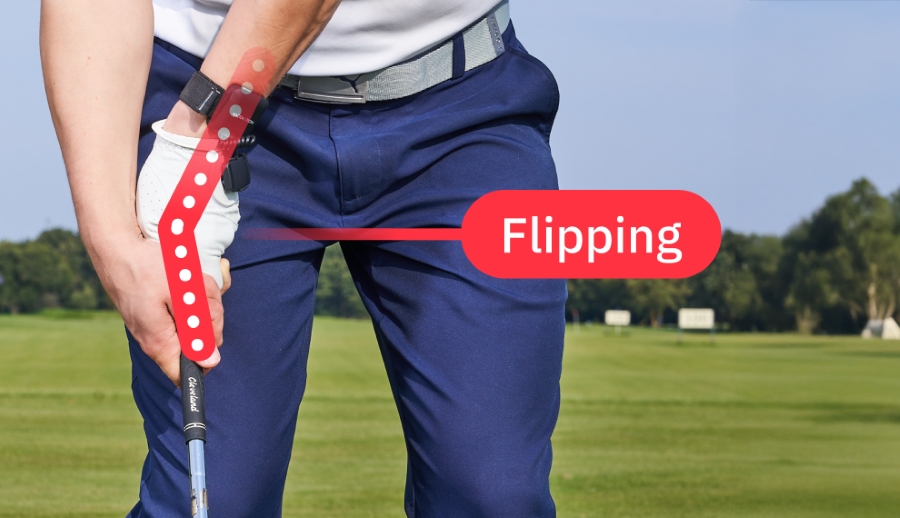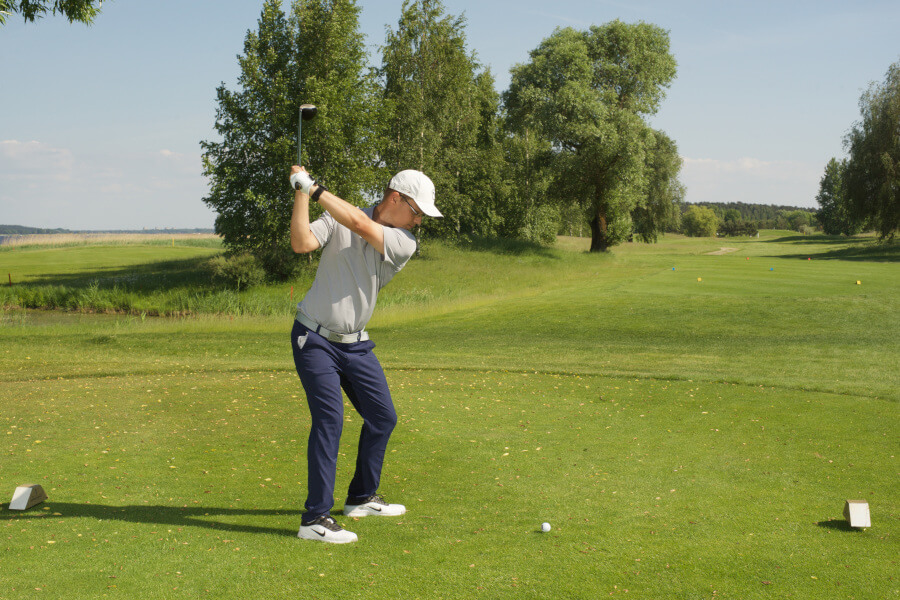Steep vs. Shallow Golf Swing (Differences, Pros, Cons, and Fixes)
Every golfer has a natural swing. It’s a way they swing the club that may or may not be correct, but it occurs naturally due to their physical features.
For taller golfers, this swing is generally steeper, while for shorter golfers, it tends to be a shallower golf swing.
Whether you have a steep or shallow golf swing, it’s important to know the pros and cons and ensure you can produce consistent golf shots.
Steep vs. Shallow Golf Swing (Key Takeaways)
Don’t have time to read our entire article on the steep vs. shallow golf swing? Take a look at some of the key points you should know:
- A steep golf swing can be useful when hitting bunker shots or trying to get the ball out of the rough. However, when used with the driver or other longer clubs, it often creates a left-to-right ball flight.
- A shallow golf swing is a good option for generating additional power and distance in the golf swing.
- Your lead wrist position should be flat at the top of the backswing to help get the golf club on plane. If the wrist is too flexed, your club may be shallow; if it’s too extended, the club may be steep.
Steep Golf Swing
The steep swing has a golfer swinging above the plane. With a steep golf swing, you’ll feel like the club is higher up and away from the ground.
It will also not feel as though the club swings around as much as it swings up and down.
Most of the time, any golf swing not on plane (steep or shallow) creates an issue in the game. However, there are times when a steep golf swing can lead to effective golf shots.
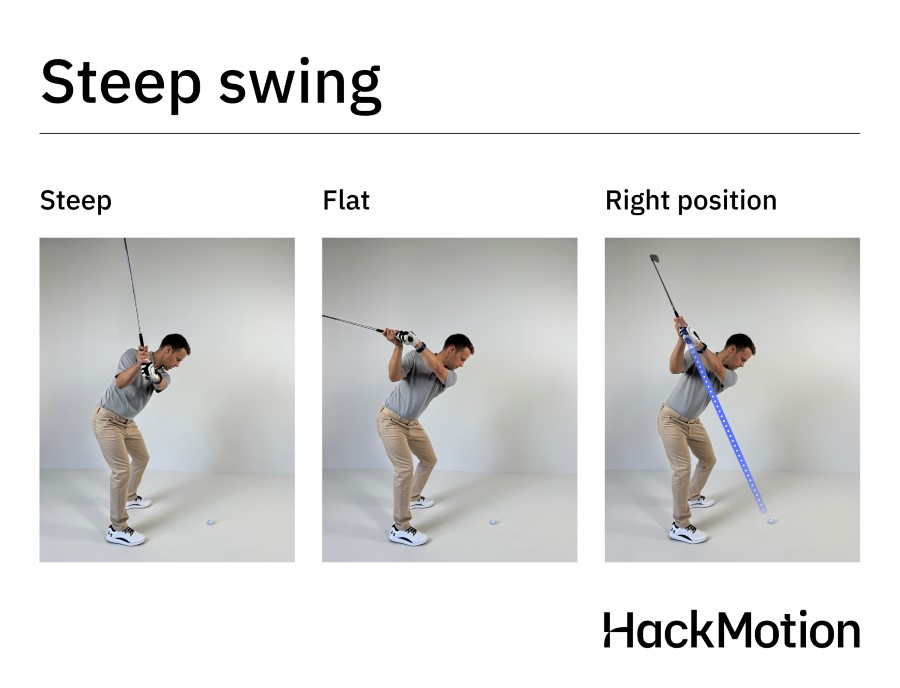
Pros of Steep Swing
- Increased control from a tight lie and higher ball flight on the wedges and short irons.
- Effective in the rough and out of the bunker, where you can cut through the sand or thick grass more effectively.
- Higher spin rates and the ability to stop the ball when your swing is more steep.
Cons of Steep Swing
- A steep swing increases the risk of slicing the golf ball. We notice that most golfers who have a steep swing have too much extension in their lead wrist in the backswing. This wrist action leaves them with an open clubface at impact.
- Reduced distance and sometimes a golf club that digs too deeply into the ground. The steep backswing often leads to a golfer feeling as though they need to flip their wrists right before impact to square the face.
Essentially, a steeper swing can be beneficial at times, but it’s not a solution for all of your golf shots.
Drills to Fix Steep Swing
The steep swing has some benefits, but if you find that you are experiencing more negative than positive, here are two drills to help shallow out your steep golf swing.
Hit Hard Stop Quick Drill
The hit-hard stop-fast drill has you attempt to stop your golf swing just after impact. This hard stop of the golf club can only happen if you are swinging on the proper plane with a flat or even slightly flexed lead wrist.
If your swing is too upright or steep, you’ll leave the club in the ground. Try this drill to shallow out your swing a bit.
Hit Hard Stop Quick Drill – Step by Step
- Take a full backswing and hit the ball with speed.
- Try to stop the clubhead immediately after impact.
- Keep your arms straight and lead wrist flat or slightly flexed.
- Use a visual stop point like the edge of a mat.
- Start slow, then build to full-speed swings.
Shallow and Strike Drill
The Shallow and Strike drill helps you train a flatter shaft angle in the downswing by using wrist flexion to “lay off” the club.
Many golfers struggle with a steep transition because of excessive wrist extension. This drill trains you to reverse that by flattening the lead wrist at the top and swinging from the inside.
If your backswing gets too vertical or your shots tend to slice, this drill will help you shallow the shaft and compress the ball properly.
Shallow and Strike Drill – Step by Step
- Take the club to the top of your backswing.
- Flatten the lead wrist (add flexion) and feel the thumbs point away from your head.
- Pause and check that the shaft feels more horizontal or “laid off.”
- Make short, punch-style swings from that position.
- Progress to full swings while maintaining the flatter wrist angle at the top.
Shallow Golf Swing
The shallow golf swing is a goal for many golfers. Shallow golf swings are great for hitting longer clubs like the driver and fairway woods, but they can get you into some trouble when it comes to shorter irons.
Pros of Shallow Swing
- The shallow golf swing will help you increase your distance on the longer clubs.
- You’ll have a much lower chance of digging the club into the dirt.
- Golfers who struggle with wrist, elbow, and even shoulder pain often find the shallower swing easier on their bodies.
- Most golfers with a shallow swing are able to get their wrist into a more flexed position through impact, which provides a lower, more penetrating ball flight.
Cons of Shallow Swing
- If your timing is a little off, or the clubface is just slightly closed, the chance of hitting a hook with a shallow swing is much higher.
- As great as that extra distance is, you may have a hard time controlling your golf shots when you have a shallow golf swing.
- Backspin can be limited with short irons and wedges.
- When your golf ball is in a tight spot, such as a sand trap or thick rough, sometimes your angle of attack isn’t steep enough to lift the ball off the ground.
Drills to Fix Shallow Swing
If you find your golf swing is just a bit too shallow, here are two drills you can use to help bring it to the proper angle.
Neutral Wrist Reset Drill
This drill is for golfers who are too shallow in the downswing, often from excessive lead wrist flexion (bowed wrist) at the top.
By adding a slight extension instead, you can square the face and get the club back on plane, leading to cleaner contact and straighter shots.
If you tend to hit hooks, push draws, or fat shots from a shallow shaft, this is the fix.
Neutral Wrist Reset Drill – Step by Step
- Go to the top of your backswing and pause.
- Slightly extend your lead wrist (add a “cup” feel).
- Point your thumbs slightly up or back toward your trail shoulder.
- Make short punch-style swings from that top position.
- Repeat to ingrain a more neutral wrist position at the top.
Motorcycle Wrist Control Drill
This guided HackMotion drill uses real-time vibration feedback to help you train consistent wrist angles in the downswing. You’ll learn to avoid excessive flexion (too shallow) and extension (too steep) and stay in the optimal range.
It’s perfect for players who struggle to feel wrist movement during transition.
Motorcycle Drill – Master Wrist Flexion in the Downswing
Focus on continuously adding flexion until the club reaches parallel, then smoothly complete your swing.
HackMotion Motorcycle Drill – Step by Step:
- Launch the Motorcycle Drill in the HackMotion app.
- Address the ball and take the club to the top.
- Begin your downswing and maintain wrist angles within the target range.
- Feel for light feedback vibrations to know if you’re on track.
- Repeat slow reps to build consistency, then increase speed.
Drills for Getting Your Swing on Plane
If you knew you had a consistently shallow or steep golf swing, you could quickly and easily fix it.
However, most golfers find their swing varies somewhere between too steep and too shallow on any given day.
Here are some swing plane drills to help you find the middle.
3 and 1 Drill (Trail Arm and Wrist Control)
If your swing is off-plane or your trail elbow flies out during transition, this drill is your reset.
It combines a powerful trail elbow position with a functional wrist angle, improving face control, compression, and your ability to swing from the inside without shutting the face.
3 and 1 Drill – Step by Step:
- Set up with Position 3: trail elbow in front of your body (externally rotated).
- Combine with Position 1: trail wrist extended (cupped) and palm slightly facing out.
- Keep this elbow–wrist alignment as you start your backswing.
- Practice slow, controlled swings while maintaining that structure.
- Gradually work into fuller swings while keeping the feel of “3 and 1” throughout.
Swing Path Gate Drill (With Wrist Control Integration)
Fixing your swing plane requires more than just adjusting your path – you need the clubface to match.
This drill uses a headcover gate to guide your club path while training lead wrist angles for better face control.
Swing Path Gate Drill – Step by Step:
- Set up two soft objects (like headcovers) to create a gate: Place one behind the ball and outside the target line. Place the other ahead of the ball and inside the target line.
- Swing through the gate without hitting the headcovers to promote an in-to-out path.
- Monitor your lead wrist angle with HackMotion, aim for flat or slightly flexed at the top and at impact.
- If your clubface is open (extended wrist), the brain will steer the swing path left, fix the wrist first.
- Once the face is square, your swing path will feel natural and result in straighter, longer shots.
Swing Plane Station Drill
Creating a training station with an angled alignment stick helps reinforce a proper swing plane.
This visual constraint prevents common backswing and downswing errors and is modeled after drills used by tour players.
Swing Plane Station Drill – Step by Step:
- Push an alignment stick into the ground at an angle that matches your club shaft at address.
- Set it just outside your swing path and angled slightly upward (like your shaft).
- In your backswing, avoid letting your hands or club go under the stick.
- In your downswing, avoid dropping the club behind or below the stick.
- Practice swinging so your club stays above the stick the entire way through.
Conclusion
Both steep and shallow swings have their place in the game of golf. The great players know how to take a slightly steeper or more shallow golf swing.
Remember that your swing plane is very much impacted by the angle of your wrists in the golf swing.
Don’t forget to wear HackMotion (your coach on your wrist) while you are practicing to shallow or steepen your swing. You’ll notice the positions are easier to get to, and your awareness of the clubface will increase quickly.
